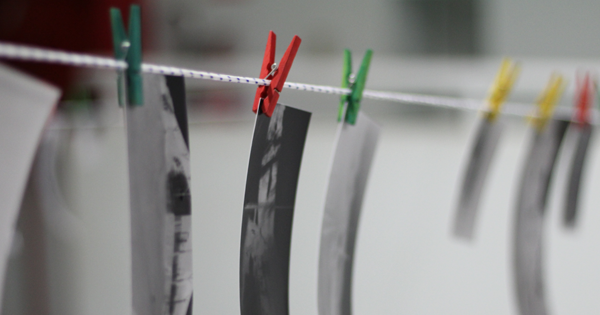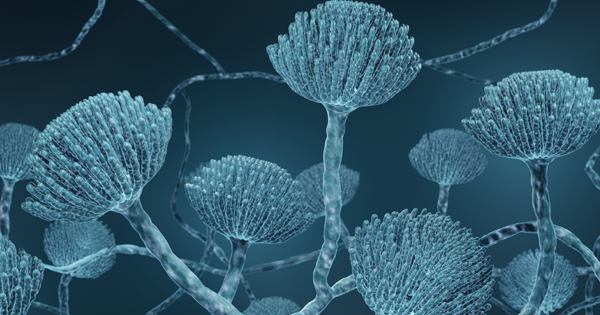
Collection salvage guidelines
Guidelines. including do's and don'ts. to help you dry water-damaged belongings organised by format, for example, works of art on paper, manuscripts, newspapers, sound recordings, oversize items and photographs.
Download a PDF of ‘Collection salvage guidelines’
This is the web version of Collection salvage guidelines
You can download the PDF version of these guidelines Collection salvage guidelines
Dealing with water-damaged materials
Below are some basic guidelines for salvaging the following if they have been damaged by water:
Bound material
Works of art on paper
Manuscripts and archives: Serials, papers, documents
Newspapers oversize items: Maps, volumes
Sound recordings: grooved discs
Sound recordings: Cassettes, magnetic tapes, video cassettes
Sound recordings: Floppy disks
Sound recordings: CDs, DVDs, photographs
The guidelines are based on the National Library of New Zealand Collection Salvage Guidelines.
Bound material
Do
Assess the degree of wetness and put into individual plastic bags.
Mark a code number on the outside of the bag with a marker pen.
Freeze as soon as possible.
Freeze-coated papers as quickly as possible or keep wet.
Pack books into crates spine down.
Air-dry leather/vellum bindings if possible.
Don’t
Do not open or close books.
Do not attempt to clean wet books.
Do not pack books tightly into boxes.
Do not carry out repairs.
Works of art on paper
Do
Handle wet paper with extreme care.
Air-dry works that are made of soluble material like watercolours immediately. If not possible, freeze immediately.
Freeze or air-dry other materials within 48 hours.
Interleave artworks when possible.
Support piles of wet paper from underneath.
Unframe and unmat framed wet works.
If wet contents cannot be removed safely leave and contact us for more advice.
Don’t
Do not attempt to separate wet sheets.
Do not blot surfaces with soluble media.
Do not attempt to clean or remove dirt from wet items.
Do not attempt to carry wet paper unsupported.
Do not attempt to empty drawers of wet contents if the material is stuck.
Manuscripts and archives, serials, papers, documents
Do
Handle wet paper with extreme care.
Freeze or air-dry material with soluble media immediately.
Freeze or air-dry other material within 48 hours.
Separate material into manageable bundles and interleave or wrap bundles. If material is in folders, interleave folders. Loosely pack into crates and freeze.
Interleave coated paper immediately, if possible, page by page and allow to dry or keep wet by wrapping in plastic. Then freeze immediately.
Drain excess water from intact containers/boxes and freeze contents in original container/box.
Remove contents from all sodden enclosures and boxes and put in a dry container.
Transfer any information written on the boxes to the new box or wrappings.
Freeze entire drawers with contents if contents are sodden
Don’t
Do not squeeze out water.
Do not turn pages.
Do not pack tightly into crates.
Do not attempt to clean off dirt.
Do not carry out repairs.
Do not attempt to separate wet sheets.
Do not attempt to sponge/wipe dirt or soluble media from wet documents.
Do not attempt to remove fasteners
Do not attempt to empty wet drawers of sodden material.
Newspapers
Do
Handle with care.
Support piles of newspapers from underneath.
Assess the degree of wetness and wrap in plastic film.
Mark a code number of the outside of the plastic with a marker pen.
Freeze as soon as possible
Don’t
Do not squeeze out water.
Do not turn pages.
Do not pack tightly into crates.
Do not attempt to clean off dirt.
Do not carry out repairs.
Oversize items — Maps, volumes
Do
Handle wet paper with extreme care.
Air-dry works with soluble material immediately. If not possible, freeze immediately.
Freeze or air-dry other materials within 48 hours.Separate material into manageable bundles; wrap or interleave bundles. If material is in folders, wrap or interleave folders.
Support oversize materials from underneath.
Interleave coated paper immediately, if possible, page by page and allow it to dry or keep wet by wrapping it in plastic. Then, freeze immediately.
Sponge or drain standing water from drawers and freeze entire drawers and contents if wet contents cannot be removed safely.
Don’t
Do not attempt to separate wet sheets
Do not attempt to carry oversize wet material without a support underneath.
Do not attempt to sponge/wipe dirt or soluble media from wet oversize items.
Do not attempt to empty drawers of oversize wet material.
Sound recordings — Grooved discs
Do
Separate discs from wet liners and jackets.
Remove excess moisture with a soft cloth.
Mark the centre of the disc with a grease pencil if labels have come off.
Transfer discs upright, like sizes together, to padded crates. Interleave every 25 discs with foam.
Wash in clean water and air-dry.
Air-dry original jackets.
Don’t
Do not expose to direct heat.
Do not stack discs.
Sound recordings — Cassettes, magnetic tapes, video cassettes
Do
Separate tapes from wet containers and inserts.
Keep wet contaminated polyester-based tapes completely immersed in cold water but for as short a time as possible.
Air-dry clean tapes.
Pack tapes vertically in plastic crates for transport to washing area.
Don’t
Do not expose to direct heat.
Do not touch with bare hands. Wear nitrile or latex gloves.
Do not attempt to unwind tapes or play on a machine.
Do not freeze magnetic tape.
Sound recordings — Floppy disks
Do
Remove disks from their jackets later.
Wash in cold water.
Air-dry.
Pack disks upright in containers completely immersed in cold water, if wet.
Don’t
Do not use magnetised scissors.
Do not wipe with fingers or cloth.
Do not expose to direct heat.
Sound recordings — CDs, DVDs
Do
Keep discs wet in their jewel cases until they can be dried properly.
Wash in cold water and pack in plastic bags.
Air-dry.
Don’t
Do not wipe with fingers or cloth.
Do not expose to direct heat.
Photographs
Do
Air-dry immediately, if possible.
Keep immersion time to a minimum.
Keep wet until separated from enclosures.
Rinse gently in clean, cold water, if dirty.
Air-dry, emulsion side up. Deal with least stable items first:
- Early colour plates will not survive immersion
- Collodion glass negatives, cased items, for example, daguerreotypes, ambrotypes, tintypes can survive immersion up to 24 hours
- Modern colour prints, silver gelatin prints and negatives can survive being wet for up to 48 hours
- Albumen prints and collodion-chloride prints can survive being wet up to 3-4 daysFreeze if cannot be air-dried. Seal in plastic bags to freeze.
Freeze-dry if cannot be air-dried or frozen and thawed.
Don’t
Do not allow photographs to dry in contact with anything else. They will stick together permanently.
Do not freeze-dry collodion glass negatives.
Do not wash or soak in warm water.
Wet photographs
Mould is commonly present on wet and damp photographic material. Exposure to mould can cause people to experience short term discomfort or can cause long term illnesses. Take care to protect all people handling wet photographs by providing them with protection such as plastic gloves (latex, nitrile, etc) and face masks rated for use with mould. Tyvek body suits may also be required.
The recommended methods of recovery, in order of preference, are:
1. air-dry photographs immediately
2. freeze, thaw, air-dry
3. freeze dry (seek advice before using this option)
Air-drying
If photographs are dirty they can be rinsed gently in clean, cold water. It is very important to keep identifying information with each item to avoid confusion later.
Air-dry items on clean absorbent paper (e.g. blotting paper, unprinted newsprint, paper towels). The image side must be uppermost during drying.
Do not touch the image side of wet photographs it will be very soft and vulnerable. Never allow the image side of photographs to dry in contact with anything else, as they will stick together permanently.
If the image layer on glass negatives is physically sound they can be propped up, image side uppermost, on their long edge to dry. Broken or damaged glass negative should be dried flat on absorbent paper, image side uppermost.
Film negatives can be carefully hung from a line to dry. Do not allow them to come into contact with each other as they dry. Some film negatives in poor condition may not be able to be saved. If they look damaged or deteriorated dry them flat on absorbent paper, image side uppermost.
Fans and dehumidifiers will aid drying. Avoid the use of heat as it can cause mould-growth and other problems.
Freeze, thaw, air-dry
You can freeze wet photographs if you can’t air-dry them immediately. Place them in easy-to-handle batches inside sealed plastic bags, then freeze. Interleaving the items with greaseproof paper is preferable as they will be easier to separate in the future. These items can stay frozen indefinitely.
When you are ready to deal with the items defrost only as much as you can handle in one day. Gently separate thawed items taking care not to allow them to dry before they are separated. Dry using the methods outlined above.
Get in touch
In case of emergency, act quickly. Contact us for advice in protecting your collections from damage caused by fire, flood, earthquake, mould or pests.
Email — preservation@dia.govt.nz
Related content

Drying your whānau collections — checklist
A short checklist to help you safely dry water-damaged belongings such as photographs, books, artworks and music collections after a flood.
Dealing with mould after a flood — checklist
Mould can quickly appear on whānau collections after a flood. This factsheet will help you understand mould, take action if you find mould on water-damaged whānau collection including steps to clean damaged items safely.Feature image at top of page: Photograph of flooding in a Greymouth street, late 1940s, by Lawrence Inkster. Ref: PAColl-8255. Alexander Turnbull Library.